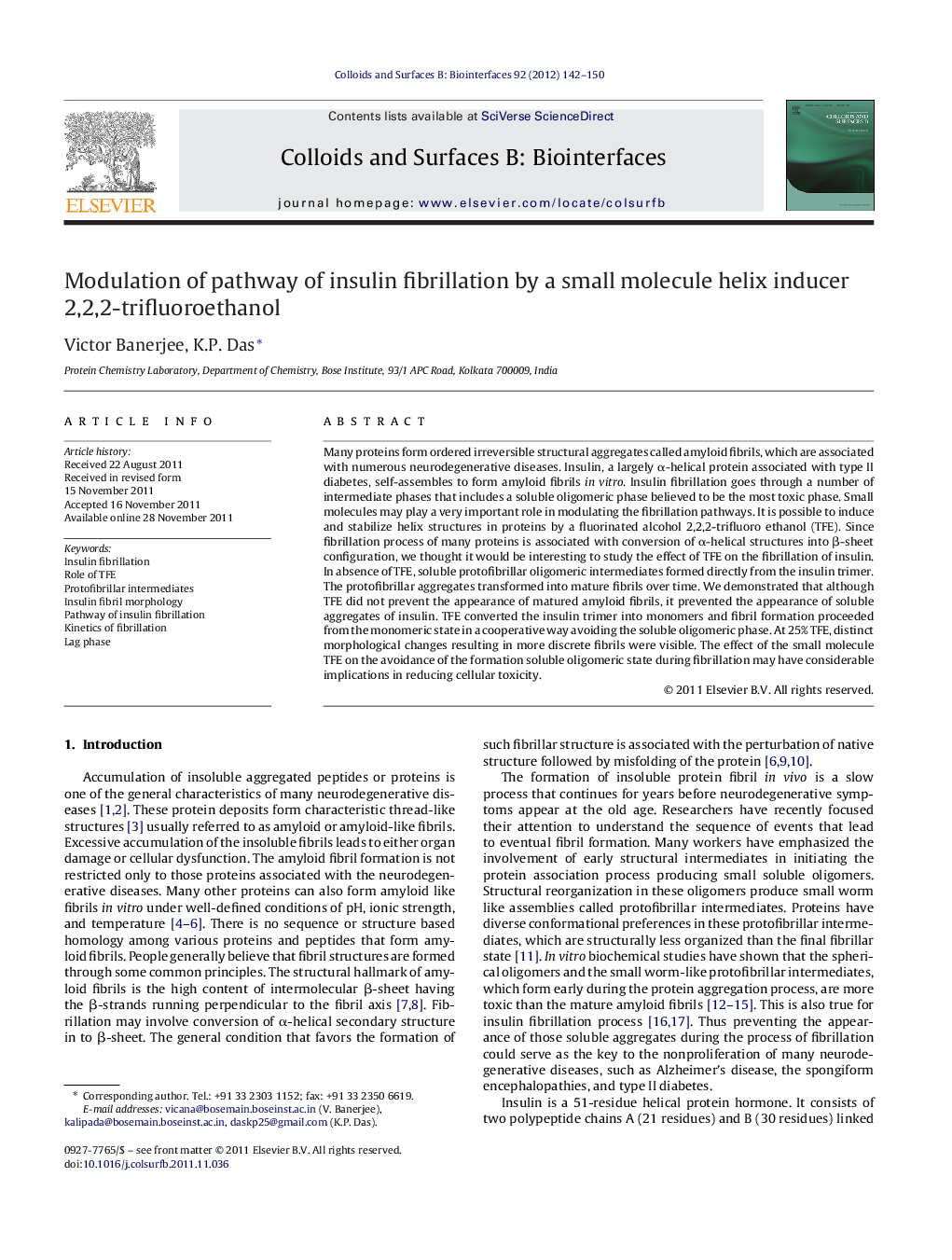| کد مقاله | کد نشریه | سال انتشار | مقاله انگلیسی | نسخه تمام متن |
|---|---|---|---|---|
| 600649 | 1454312 | 2012 | 9 صفحه PDF | دانلود رایگان |

Many proteins form ordered irreversible structural aggregates called amyloid fibrils, which are associated with numerous neurodegenerative diseases. Insulin, a largely α-helical protein associated with type II diabetes, self-assembles to form amyloid fibrils in vitro. Insulin fibrillation goes through a number of intermediate phases that includes a soluble oligomeric phase believed to be the most toxic phase. Small molecules may play a very important role in modulating the fibrillation pathways. It is possible to induce and stabilize helix structures in proteins by a fluorinated alcohol 2,2,2-trifluoro ethanol (TFE). Since fibrillation process of many proteins is associated with conversion of α-helical structures into β-sheet configuration, we thought it would be interesting to study the effect of TFE on the fibrillation of insulin. In absence of TFE, soluble protofibrillar oligomeric intermediates formed directly from the insulin trimer. The protofibrillar aggregates transformed into mature fibrils over time. We demonstrated that although TFE did not prevent the appearance of matured amyloid fibrils, it prevented the appearance of soluble aggregates of insulin. TFE converted the insulin trimer into monomers and fibril formation proceeded from the monomeric state in a cooperative way avoiding the soluble oligomeric phase. At 25% TFE, distinct morphological changes resulting in more discrete fibrils were visible. The effect of the small molecule TFE on the avoidance of the formation soluble oligomeric state during fibrillation may have considerable implications in reducing cellular toxicity.
Figure optionsDownload as PowerPoint slideHighlights
► Insulin fibrillation proceeds through formation of oligomeric intermediates believed to be more toxic than the matured fibrils.
► 2,2,2-Trifluoroethanol (TFE) modulates the pathway of insulin fibrillation and offered an alternative pathway that does not involve formation of oligomeric intermediates.
► To prevent the appearance of soluble aggregates of insulin 1000 times molar excess TFE is required.
► Matured fibrils of insulin in presence of 15% or more TFE are morphologically different from those in absence of TFE and bind less thioflavin T dye.
Journal: Colloids and Surfaces B: Biointerfaces - Volume 92, 1 April 2012, Pages 142–150